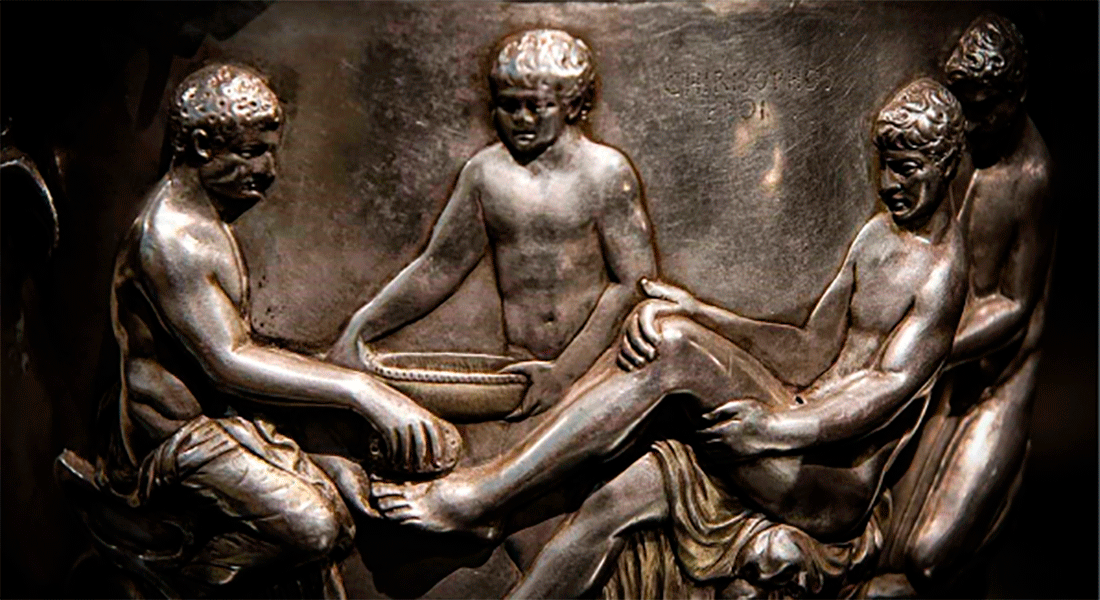The Intelligent Hand From Hellenistic Epigram to the Hoby Cups
Lecture with Professor Verity Jane Platt from Cornell University.
 This lecture takes its lead from the artist who signed his name on the silver cups from Hoby (now in the National Museum of Denmark) as ‘Cheirisophos’, meaning ‘Wise Hand’. Rather than just taking the name as a playful pseudonym, it explores how the artist’s self identification can be read alongside the scenes of diplomacy, supplication and healing on the cups themselves, which are also examples of intelligent acts of touch. In their allusions to Greek epic and drama, these scenes also draw on a long tradition in Graeco-Roman culture exploring the entangled relationship between hand and mind. As a form of enactive or extended cognition, the ‘wisdom of hands’ is also key to Hellenistic Greek epigrams on works of art, especially those on bronze statues by the third century BCE poet Posidippus. The notion of the ‘intelligent hand’, emerging from the craft of metalwork, challenges the instrumentalist assumptions of Aristotle’s claim that the hand is simply the ‘tool of tools’, asserting a form of haptic wisdom that is vital to the transmission of Greek culture, even beyond the edges of the Roman Empire.
This lecture takes its lead from the artist who signed his name on the silver cups from Hoby (now in the National Museum of Denmark) as ‘Cheirisophos’, meaning ‘Wise Hand’. Rather than just taking the name as a playful pseudonym, it explores how the artist’s self identification can be read alongside the scenes of diplomacy, supplication and healing on the cups themselves, which are also examples of intelligent acts of touch. In their allusions to Greek epic and drama, these scenes also draw on a long tradition in Graeco-Roman culture exploring the entangled relationship between hand and mind. As a form of enactive or extended cognition, the ‘wisdom of hands’ is also key to Hellenistic Greek epigrams on works of art, especially those on bronze statues by the third century BCE poet Posidippus. The notion of the ‘intelligent hand’, emerging from the craft of metalwork, challenges the instrumentalist assumptions of Aristotle’s claim that the hand is simply the ‘tool of tools’, asserting a form of haptic wisdom that is vital to the transmission of Greek culture, even beyond the edges of the Roman Empire.
Part of the Archaeology Research Seminar Series - Spring 2024
Map of South Campus
View directions.
View on map of the Faculty of Humanities - South Campus.
View map of South Campus (pdf).
